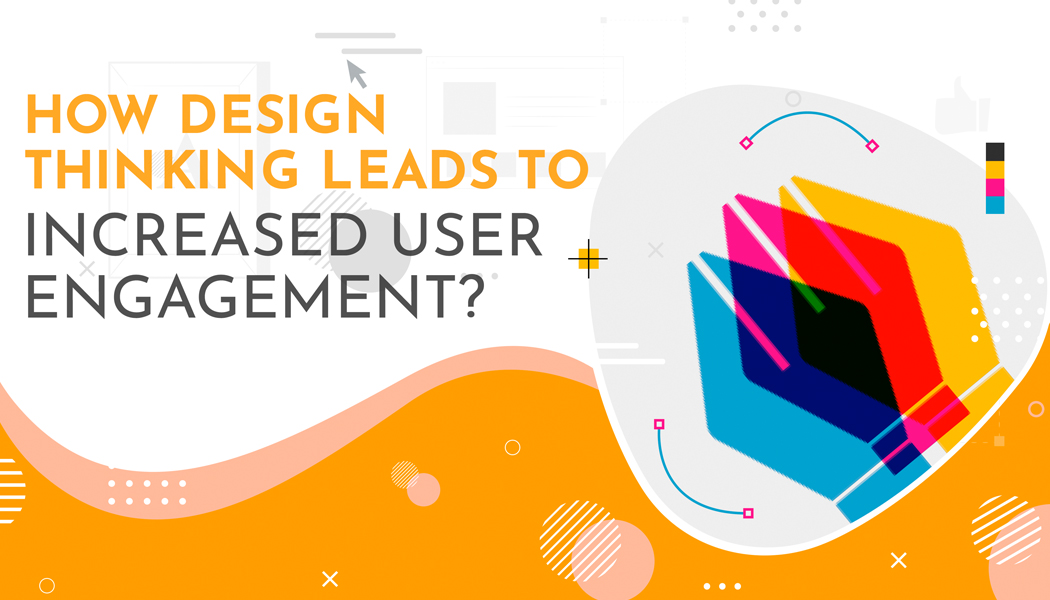How Design Thinking Leads to Increased User Engagement?
In the market of digital solutions today we have a staggering volume of products and services across the niches. Naturally, for any digital product to stay competitive and stand out from the rest is a bit difficult and challenging. But this is why developers are on the lookout for better approaches to engage users. Design Thinking is one of those modern approaches to boost user engagement in a never before way.
To understand how design Thinking really helps in improving user engagement, we need to understand the concept in depth. Let's start from the definition of design thinking before understanding other aspects.
What Exactly is Design Thinking?
As per the most renowned experts in product engineering and design, the concept of design thinking Basically relates to the expertise of validating product development and design strategies by challenging the preconceived assumptions and coming with alternative strategies and solutions that may not look appropriate at the initial stage.
Design Thinking is a data driven approach to come with alternative product engineering strategies. These data can be sourced from the conversation with the customers or through surveys carried out after the sales of a product. In effect, it allows the product engineers and developers to come with alternative or out of the box approaches for development. Design Thinking is basically the approach to come with a unique product design or development strategy validated by user data inputs.
The process of design thinking that we will discuss elaborately later, consists of basically five different steps, respectively Empathise, Define, Ideate, Prototype and Test.
Exactly Where Design Thinking Really Fits Into The User Journey?
The most important reason behind the popularity of design thinking is that it can remove the pain points and the detested things from the customer journey. By unveiling deeper meaning into customer actions and choices, design thinking tries to address those issues and problems along the customer journey.
The basic tenet of design thinking is to avoid preconceived assumptions and only to make decisions based on data fields that are available for decision making. This may involve incorporating data from diverse sources such as after-sales and post-interaction data to address the issues customers face.
Design Thinking Process: Creating Something Useful for Actual User Situations
Design thinking is basically a solution centric approach that focuses on using creative elements for solving complex problems. To use creative approach to problem solving it makes use of real-world learning.
“Thinking” is added to the “Design” process simply because of the brainstorming creative alternatives and inputs apart from just focusing on the aesthetics. Together they refer to the process of creating aesthetically appealing solutions powered by unique solutions based on user data.
As it focuses on making a solution more useful, engaging users remains a focus area for the design thinking experts. Naturally, at every step the product engineers using a design thinking approach focuses on delivering solutions that make a positive influence or impact on the usability of the product.
Let us now take a closer and comprehensive look at the various stages of the design thinking process, respectively as empathize, define, ideate, prototype, test.
Empathize
Can you solve a pain point for the users if you don't know what exactly pains them? Without understanding and empathising for the problems users facing you can't solve the problems. This is why, the first and foremost step is to understand the user's problems and develop empathy for them. Understanding the users in depth may require carrying out ethnographic user research through interviews and gathering data by observing user activities. This will not only help understanding the users but also the real context of these activities.
This may obviously require the mobile app design company to get out of their production lab and hit the streets to get a real life understanding of the contexts where the product can be useful. This will help them to do away with the assumptions and make design and development solutions for actual customer issues.
Define
Now that you have empathised with the issues and problems faced by the consumers by gathering user data from different contexts, now you need to go deeper into the data and dig out data-driven insights from this pool of data. This is when you can get a comprehensive idea about solving the problem by analysing the user data. .
After you detect the issues or problems in the products relating to customer experience research, you can easily find gaps or loopholes in the current product that are responsible for these problems and issues. By analysing the customer pain points and the customer data you can also find out the missing features or solutions that can make your product more user friendly.
Ideate
Now you have a clear idea about the customer issues and the possible factors and reasons responsible for them. You not only know the glitches in the product but also the responsible factors behind those glitches. Now you only need to brainstorm as many ideas as possible for finding the ideal solutions to the problems and issues. Based on the user data that you collected at the “Define” stage, you need to analyse multiple alternatives and brainstorm the solutions for the problems.
Design Thinking is the approach to connect several different ideas from diverse disciplines and streams for the sake of unlocking creative and innovative solutions to problems and issues. By connecting your ideas with real life contexts and the lived experiences, you can easily come with appropriate and relevant ideas for the products.
Prototype
Finally, for brainstorming ideas and evaluating their worth as the design solution of your product, you need to develop prototypes. Prototypes help visualising the ideas and convey those ideas visually with other team members and other stakeholders. Prototypes will help you give a clear idea about the intended solution to the respective problems.
Every product design depends on the hypothesis of how people use a product but that hypothetical idea can be validated well with a visual design of the prototype and this is where the importance of the prototype comes to the fore. With a prototype, all the design flaws corresponding to usability can be detected way before a single line of code is written. This will actually save a lot of development time and prevent building a product with under-serving user experience.
Test
Finally, you need to validate the design decision you have come upon with prototyping. By testing the design with prototypes you can easily evaluate design solutions and allow further iteration with the product design on the basis of test feedback. This will help you hit the market with a validated product design.
It is also important to know how the people interact with a design prototype. For this you can collect evidence for supporting design choices. You only need to check whether people interact with the prototype the way you expect them to do.
This will provide a clear idea of what is effective and what is not and accordingly the designers can come with different hypotheses for solving the problem.
Conclusion
Coming with a design solution based on real-world learning and coming with a unique product design without depending on preconceived ideas, these are the two principal positive aspects of design thinking. In a world where businesses are focused on creating solutions based on user intents and preferences, design thinking is likely to enjoy an upperhand in the design and development processes.




